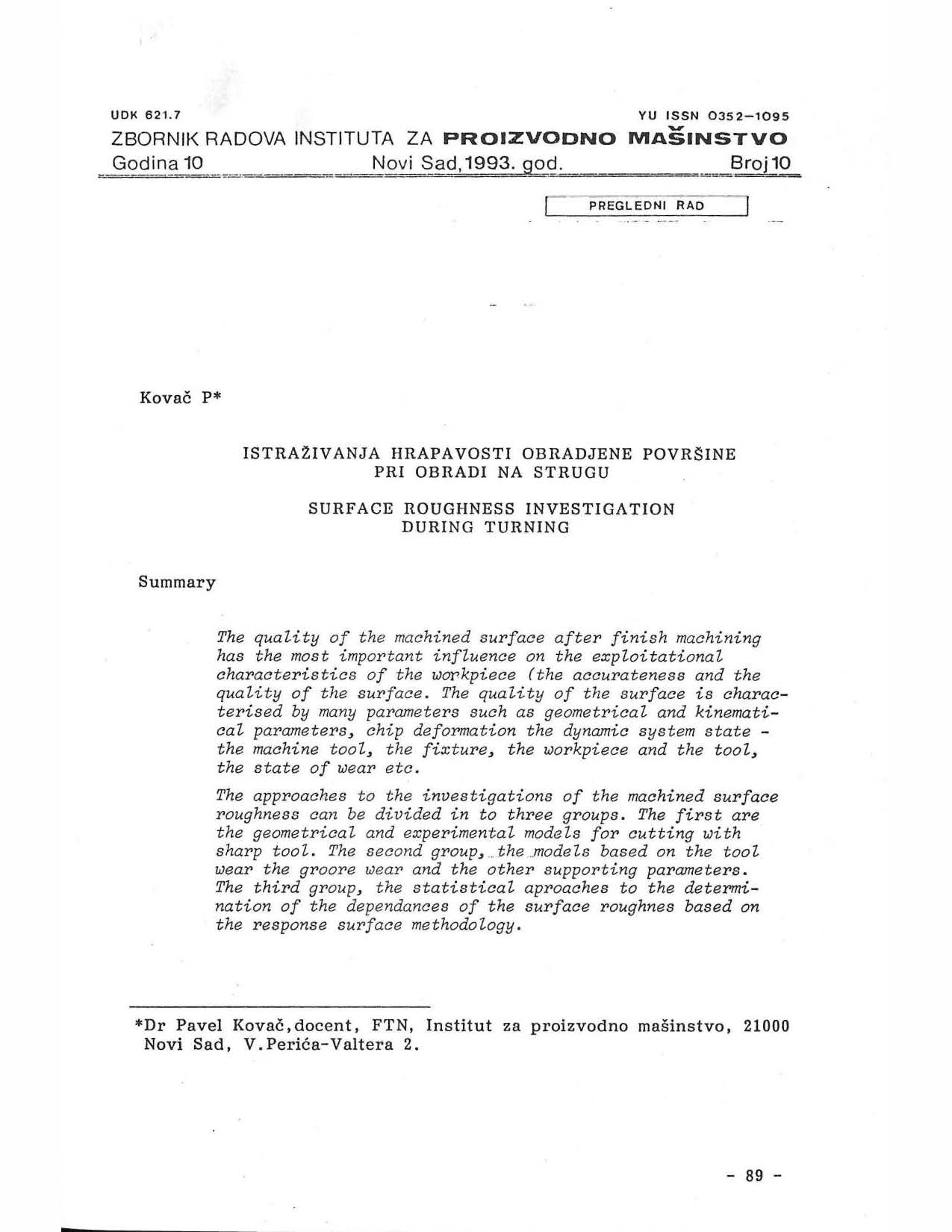
Published 1993-12-01
abstract views: 15 // FULL TEXT ARTICLE (PDF): 5
Keywords
- Surface roughness,
- turning
How to Cite
Copyright (c) 2023 Journal of Production Engineering

This work is licensed under a Creative Commons Attribution 4.0 International License.
Abstract
The quality of the machined surface after finish machining has the most significant influence on the operational characteristics of the workpiece, including accuracy and surface quality. The quality of the surface is characterized by numerous parameters, such as geometric and kinematic parameters, chip deformation, the dynamic system's state (including the machine tool, the fixture, the workpiece, and the tool), and wear conditions, among others. The approaches to investigating machined surface roughness can be divided into three groups. The first group comprises geometric and experimental models for cutting with a sharp tool. The second group focuses on models based on tool wear, groove wear, and other relevant parameters. The third group involves statistical approaches for determining the dependencies of surface roughness based on response surface methodology.

